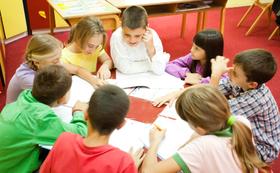For the 2025-26 school year, there are 3 public high schools serving 439 students in Hinckley-Finlayson School District. This district's average high testing ranking is 2/10, which is in the bottom 50% of public high schools in Minnesota.
Public High Schools in Hinckley-Finlayson School District have an average math proficiency score of 22% (versus the Minnesota public high school average of 36%), and reading proficiency score of 34% (versus the 51% statewide average).
Public High School in Hinckley-Finlayson School District have a Graduation Rate of 81%, which is less than the Minnesota average of 83%.
The school with highest graduation rate is Hinckley-finlayson Secondary, with 80-89% graduation rate. Read more about public school graduation rate statistics in Minnesota or national school graduation rate statistics.
Minority enrollment is 36% of the student body (majority American Indian), which is less than the Minnesota public high school average of 37% (majority Hispanic and Black).
Overview
This School District
This State (MN)
# Schools
5 Schools
1,171 Schools
# Students
946 Students
309,919 Students
# Teachers
74 Teachers
18,769 Teachers
Student-Teacher Ratio
13:1
13:1
Student By Grade
District Rank
Hinckley-Finlayson School District, which is ranked within the bottom 50% of all 520 school districts in Minnesota (based off of combined math and reading proficiency testing data) for the 2022-2023 school year.
The school district's graduation rate of 81% has increased from 80-84% over five school years.
Overall District Rank
#400 out of 525 school districts
(Bottom 50%)
(Bottom 50%)
Math Test Scores (% Proficient)
27%
46%
Reading/Language Arts Test Scores (% Proficient)
35%
51%
Science Test Scores (% Proficient)
24%
41%
Graduation Rate
81%
84%
Students by Ethnicity:
Diversity Score
0.54
0.57
% American Indian
14%
2%
% Asian
1%
7%
% Hispanic
6%
11%
% Black
1%
11%
% White
65%
63%
% Hawaiian
n/a
n/a
% Two or more races
13%
6%
All Ethnic Groups
District Revenue and Spending
The revenue/student of $16,828 in this school district is less than the state median of $17,860. The school district revenue/student has stayed relatively flat over four school years.
The school district's spending/student of $16,151 is less than the state median of $18,585. The school district spending/student has stayed relatively flat over four school years.
Total Revenue
$16 MM
$15,547 MM
Spending
$15 MM
$16,179 MM
Revenue / Student
$16,828
$17,860
Spending / Student
$16,151
$18,585
Best Hinckley-Finlayson School District Public High Schools (2025-26)
School
(Math and Reading Proficiency)
(Math and Reading Proficiency)
Location
Quick Facts
Rank: #11.
Hinckley-finlayson Secondary
(Math: 20-24% | Reading: 34%)
Rank:
Rank:
2/
Bottom 50%10
201 Main St E
Hinckley, MN 55037
(320) 384-6132
Hinckley, MN 55037
(320) 384-6132
Gr: 7-12 | 421 students Student-teacher ratio: 14:1 Minority enrollment: 35%
Rank: n/an/a
Empower Learning Center
Alternative School
201 Main St E
Hinckley, MN 55037
(320) 384-6132
Hinckley, MN 55037
(320) 384-6132
Gr: 10-12 | 18 students Student-teacher ratio: 9:1 Minority enrollment: 67%
Rank: n/an/a
Pine County Transition Program
Special Education School
201 Main St E
Hinckley, MN 55037
(320) 384-6132
Hinckley, MN 55037
(320) 384-6132
Gr: 12
Recent Articles

Charter Schools vs Public Schools 2025: Key Differences & Trends
Explore updated 2025 insights comparing charter schools vs public schools, enrollment, academic outcomes, funding, and real-world examples for families and educators.

Are Public Schools Ready for the 21st Century? 2025 Update
Explore 2025 insights on whether public schools are ready for the 21st century, covering performance, technology, equity, funding, and future-ready learning.

Public School Open House & Enrollment Season Guide
A parent-focused guide to the public school open house and enrollment season, with expert questions, timelines, and decision tips.





